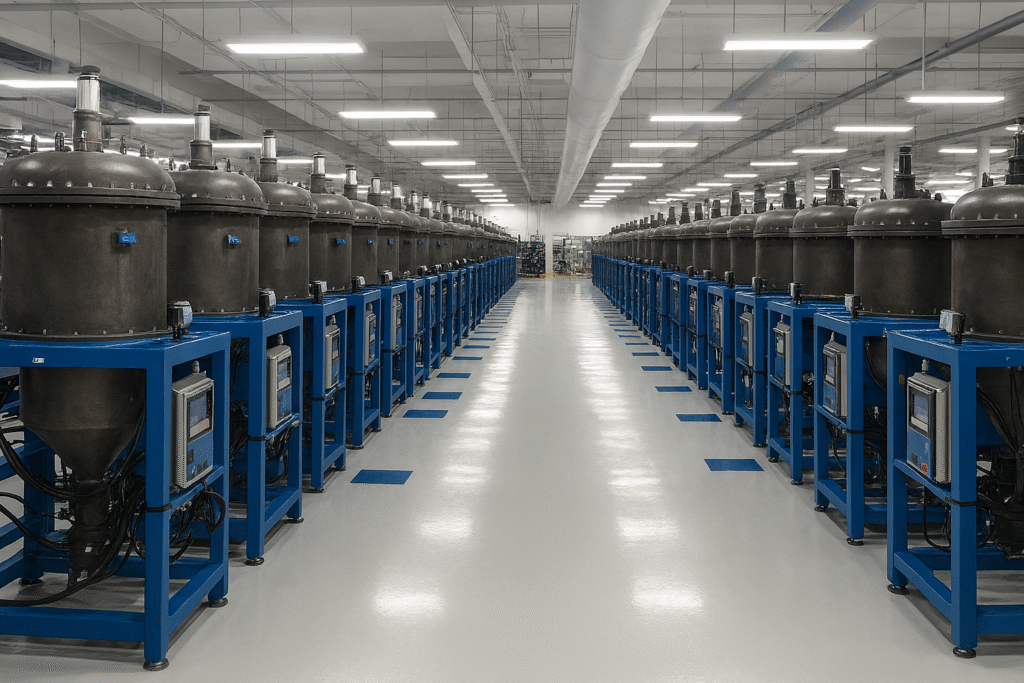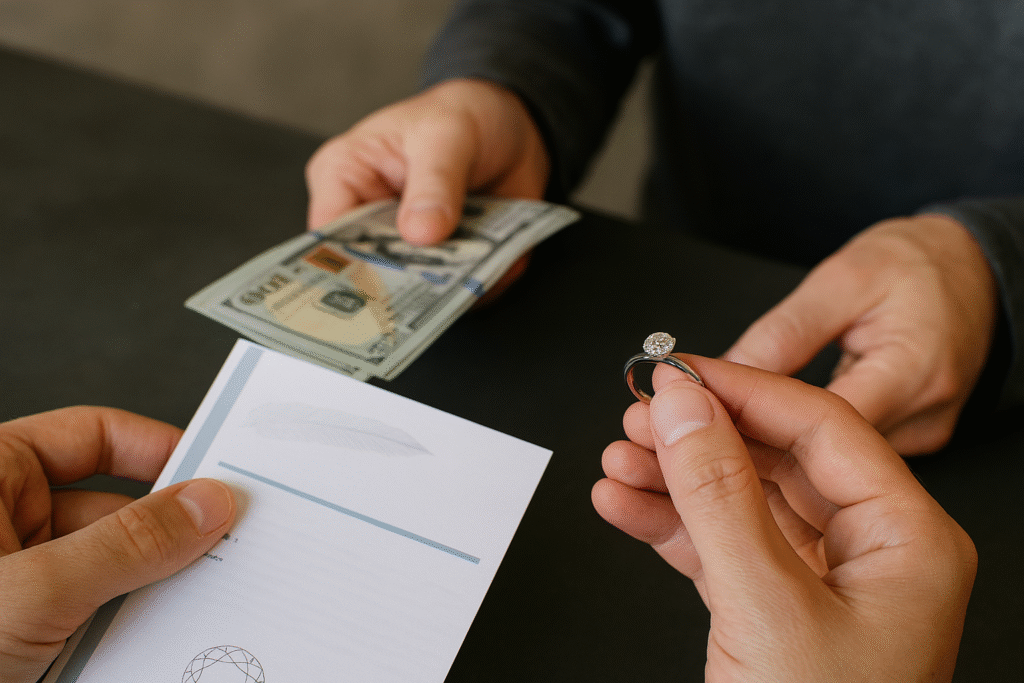KIRA Jewels, the world’s largest grower of CVD lab-grown diamonds, has announced a major expansion. The company has scaled from 2,600 to 4,000 CVD reactors, making it the most dependable supplier of sustainable lab-grown diamonds worldwide.
Monthly Production Capacity
- 250,000 polished carats produced each month
- 1 million sq. ft. solar-powered facility in India
- Powered by 75 MW solar energy, doubling to 150 MW by 2026
- Over 8,000 skilled artisans ensuring precision and craftsmanship
“The key is reliability,” said a KIRA spokesperson. “Our partners trust us because every diamond is grown, cut, and polished in-house with full transparency.”
Largest U.S. Inventory of Lab-Grown Diamonds
KIRA Jewels maintains the largest lab-grown diamond inventory in the U.S., with:
- 150,000 certified stones available for next-day delivery from New York
- Over 250,000 certified diamonds globally across all shapes, sizes, and grades
- 4,700+ partners worldwide, from manufacturers and designers to retail chains and independent jewelers
This vertical integration ensures consistent quality, sustainability, and scalability.
Certifications and Sustainability
- SMETA and SEDEX certified operations
- Solar-powered growth with reduced carbon footprint
- Ethical sourcing and production chain
FAQ: KIRA Jewels Expansion
Q: Why is KIRA expanding to 4,000 CVD reactors?
A: To meet rising global demand and ensure partners get consistent, high-quality diamonds with reliable supply.
Q: How many carats does KIRA produce every month?
A: Currently 250,000 polished carats, making it the largest CVD lab-grown diamond grower in the world.
Q: What makes KIRA different from other lab-grown diamond companies?
A: Unlike many distributors, KIRA is fully vertically integrated, producing every diamond in-house. This ensures quality, transparency, and long-term trust.
Q: Does KIRA follow sustainable practices?
A: Yes. The facility runs on 75 MW solar power, expanding to 150 MW, and holds SMETA and SEDEX certifications.
Industry Recognition
- Backed by the Kiran family’s four-decade diamond legacy
- Recognized as the most scalable lab-grown diamond supplier worldwide
- Trusted by 4,700+ global partners
Suggested Reading:
When learning about diamond certifications, check the guide on Understanding GIA and IGI Certificates.
To explore more about sustainable jewelry, check the article on Eco-Friendly Diamonds vs. Mined Diamonds.
For buyers in the U.S., read: Where to Buy Lab-Grown Diamonds in New York.
Retailers can also explore Jewelry Industry Insights section for updates.
Introduction
This Responsible Travel FAQ provides comprehensive answers to help you make ethical tourism choices.
Our guide covers eco-friendly accommodations, local community support, sustainable transportation, cultural respect, wildlife ethics, and ways to reduce waste.
Following these practices ensures your adventures benefit both destinations and travelers.
What is Responsible Travel and Why Does It Matter?
Responsible travel means making conscious choices that minimize negative impact while maximizing benefits for local communities and the environment.
Tourism generates $1.4 trillion annually but produces 8% of global carbon emissions.
Your travel decisions affect local economies, cultural preservation, and environmental conservation.
How Do I Choose Sustainable Accommodations?
Look for eco-certifications such as:
- Green Key
- LEED building standards
- EarthCheck approval
- Rainforest Alliance verification
Check if hotels use renewable energy, water-saving systems, and source food locally.
Ask about waste reduction programs and community involvement. Calling properties directly helps verify claims.
Transportation Options for Responsible Travel
- Train travel emits 80% less carbon than flying for similar distances.
- Choose direct flights when necessary and book economy class.
- Use public transport, bicycles, or walk instead of renting cars.
- Consider verified carbon offsets for unavoidable flights.
Supporting Local Economies
- Buy from locally-owned businesses instead of chains.
- Book community-based tours with local guides.
- Eat at family-owned restaurants with local ingredients.
- Stay in homestays or boutique hotels rather than international chains.
- Purchase authentic handicrafts fairly from artisans.
Packing Tips for Responsible Travel
- Reusable water bottle with filtration
- Solid toiletries to reduce plastic
- Reef-safe mineral sunscreen
- Reusable shopping bags
- Bamboo or metal utensils
- Portable laundry soap
Pack light and choose durable, multipurpose items.
Respecting Local Cultures
- Learn cultural customs, dress codes, and etiquette.
- Learn basic local phrases.
- Dress appropriately for religious and conservative areas.
- Ask permission before photographing people.
- Participate respectfully in cultural activities.
Ethical Wildlife Encounters
- Maintain safe distances and avoid feeding animals.
- Choose conservation-focused sanctuaries, not entertainment attractions.
- Avoid elephant rides, direct contact, or photo opportunities with captive animals.
- Use certified naturalist guides who prioritize welfare and habitat protection.
Reducing Waste During Travel
- Use reusable containers, bags, and utensils.
- Refuse single-use plastics.
- Choose digital tickets and receipts.
- Carry a small trash bag where disposal is limited.
Questions to Ask Tour Operators
- Are staff local and fairly paid?
- How does your business give back to communities?
- What environmental practices are in place?
- Are group sizes limited to reduce pressure on sensitive areas?
- Are wildlife experiences ethical and conservation-focused?
Money and Overtourism Practices
- Use local ATMs and tip according to local customs.
- Support social enterprises and cooperatives.
- Visit during shoulder seasons, off-peak hours, or lesser-known areas.
- Stay longer in fewer destinations.
Responsible Travel on a Budget
- Cook using local market ingredients.
- Use public transportation.
- Stay in local hostels, guesthouses, or homestays.
- Explore free cultural events or walking tours.
- Exchange skills or volunteer for free accommodation.
Pre-Travel Research
- Learn about environmental challenges and cultural sensitivities.
- Check seasonal weather and political situations.
- Identify local organizations to support.
- Read destination-specific responsible travel guides.
Creating a Positive Impact Post-Travel
- Share authentic stories on social media.
- Write detailed reviews for responsible businesses.
- Continue supporting local organizations.
- Apply sustainable practices in daily life.
- Recommend responsible travel to others.
Learn more:



